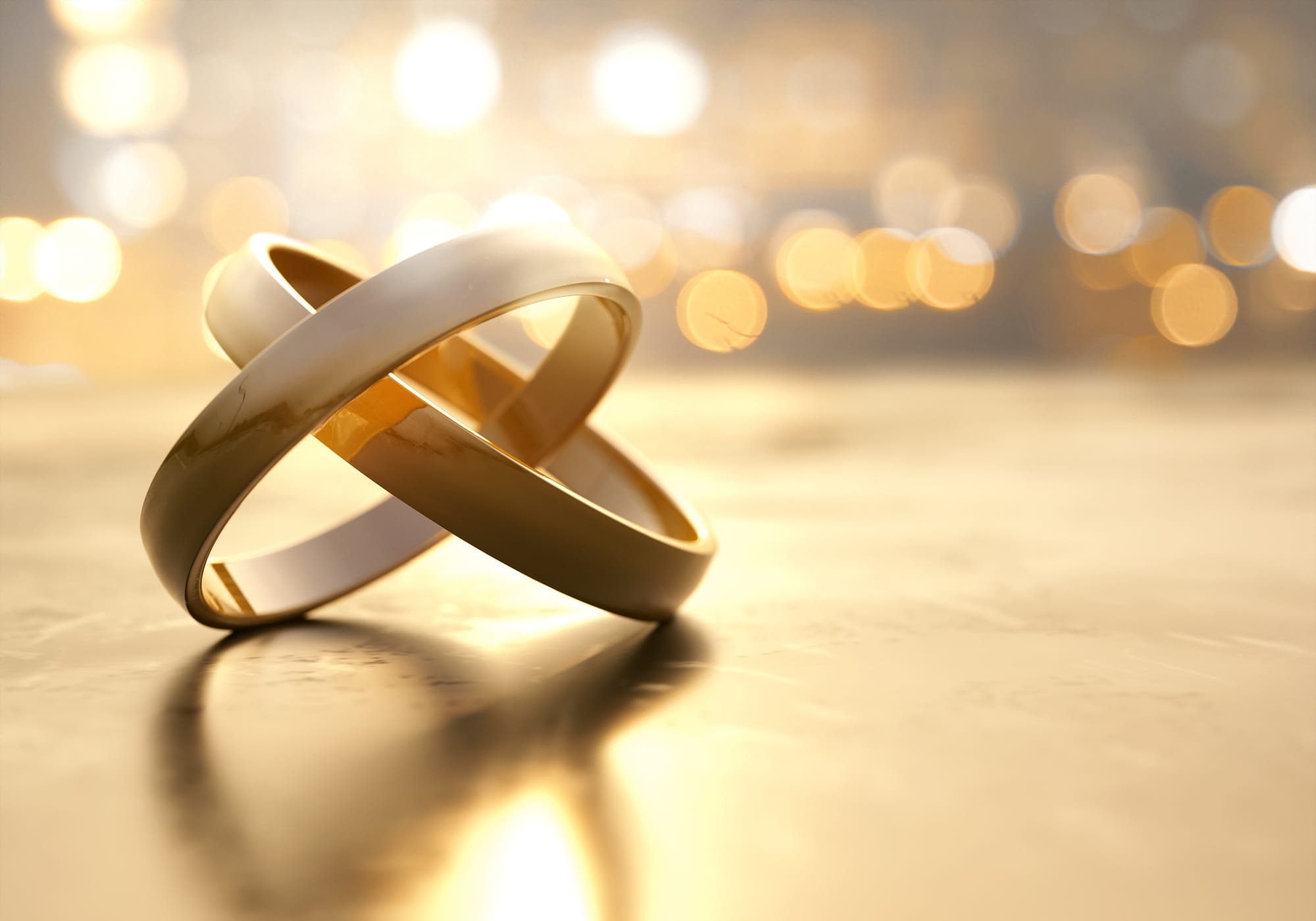Experts anticipate that there will be about 2.24 million weddings in 2023. If you have a wedding on the way, you better start preparing!
You have to find vendors, choose a great venue, make your guest list, and so much more. And make sure you don’t forget the rings!
Picking the rings is harder than you think. Yes, bands are far simpler than intricate engagement rings, but you still have to choose between a variety of wedding ring metals, shapes, and more.
We’re here to break down the different types of ring metals you have to choose from (as well as two non-metal alternatives). Read on to learn more.
Classic: Gold Wedding Rings
Gold is, of course, the most classic metal for both wedding bands and engagement rings. It’s classic and elegant, and because most jewelry companies use gold, you’ll have plenty of options to choose from.
Gold comes in several different finishes, so you have options.
First, yellow gold. Yellow gold is the most “classic” type of gold as it has a true “golden” color. Most people choose yellow gold for their rings.
White gold is next. White gold is a pale color, more similar to silver or platinum than yellow gold. It’s not pure gold, but instead, an alloy.
White gold jewelry will contain other metals, usually palladium or nickel. If you have a metal allergy, you want to avoid white gold with nickel. Palladium is generally safe for people with metal allergies, but nickel is a common allergen.
Many people have to get their white gold bands plated with rhodium every year which is something you should keep in mind if you plan on opting for a white gold ring. They do require maintenance.
Rose gold is one of the newer gold trends, but it’s stood strong for the past few years. Rose gold is an alloy that contains copper to give it its pinkish hue.
Gold can be quite expensive, but for such an important ring, it is generally worthwhile. Gold is also somewhat soft, however, so someone who works with their hands may not want to wear a gold ring full-time.
Silver Wedding Rings
Silver wedding rings aren’t as popular as gold wedding rings, but silver is still a valid option. It’s best to opt for sterling silver over any other type of silver.
Sterling silver is a precious metal. When it’s clean and in good condition, it looks almost bright white rather than grey. It’s beautiful, but only until it tarnishes.
Silver requires more care than gold, especially if you plan on wearing it every day. It can tarnish and discolor easily. It also needs to be kept with a special silver cloth when you’re not wearing it.
Like gold, silver is soft. It’s easy to break or disfigure silver rings.
Some people also have poor reactions to sterling silver. If you notice any discoloration or pain, it’s a sign that you have an allergy to the metal.
Platinum Wedding Rings
Platinum is another popular (albeit expensive) option for wedding rings. It’s one of the most popular alternatives to gold wedding rings and it always looks beautiful.
Platinum is naturally white and will stay that way without tarnishing. It’s brighter than sterling silver and white gold. It’s also harder and more durable than gold, and it’s less likely to trigger an allergic reaction.
Platinum does require polishing if you don’t want it to develop a patina, but that patina isn’t unattractive. Some people prefer it. Polishing platinum is simple.
Platinum is a fantastic option for anyone who likes cool-toned metals and wants an elegant ring.
Titanium Wedding Rings
Titanium wedding bands and engagement rings have been growing in popularity.
These rings are often simple bands and they’re usually in more “masculine” styles than the previously mentioned metals.
Titanium is incredibly light, making it great for someone who isn’t used to wearing rings. It’s less noticeable.
Titanium is also strong. Titanium rings are scratch-resistant rings, so if you’re someone who often works with your hands, it’s a great option.
Titanium can be anodized in a wide variety of colors. Normally, it looks like a more grey-toned silver. Many people get their titanium rings anodized to look like gold, but that anodization may start to fade over time (though it takes many years for that to happen).
Titanium rings are unlikely to trigger allergies.
Tungsten Wedding Rings
A tungsten wedding band is a great alternative to more ring metal types. It’s gray and hypoallergenic, and it’s also often more affordable than some of the more popular alternatives.
With that in mind, tungsten is also brittle. If your ring breaks, most jewelers won’t be able to repair it. It’s important to be careful with tungsten wedding rings.
Alternatives to Metal Rings
So what if you don’t want to wear metal?
Silicone is a great option for people who don’t want to wear metal rings full-time. Simple silicone rings are perfect for when you’re at work or at the gym. They’re affordable, they’re durable, and you won’t risk injuring your fingers if you work with your hands.
Wood is also a popular alternative. Wooden wedding rings are elegant and beautiful and the wood is often combined with metal to match the engagement ring.
There Are So Many Options for Wedding Ring Metals
If you’re looking for wedding ring metals (or non-metal alternatives), you have a lot of options to choose from. There’s no one “right” answer. Pick what works best for you and your partner.
Remember, you’ll (hopefully) be wearing this ring for a long time!
For more helpful jewelry and style tips, visit the rest of the site.







